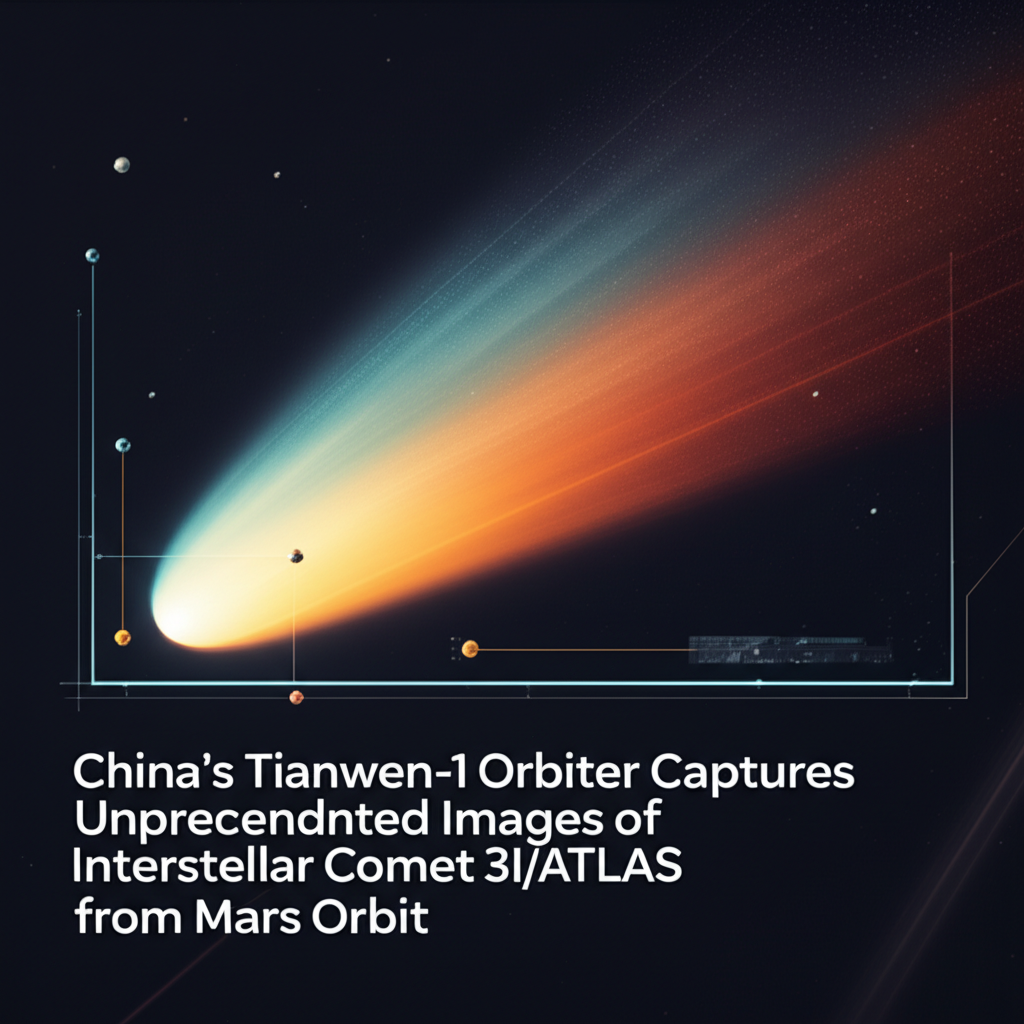Celestial Snapshot: China's Tianwen-1 Orbiter Peers Into Deep Space, Capturing Interstellar Comet 3I/ATLAS
A Martian Perspective on a Visitor from Beyond Our Solar System

In an astounding feat of astronomical observation, China's Tianwen-1 orbiter, currently dutifully circling Mars, has delivered an unexpected and scientifically invaluable gift: captivating images of the interstellar comet 3I/ATLAS. This isn't just another space photo; it's a unique glimpse at a cosmic wanderer originating from a different star system, observed from the vantage point of another planet in our own solar system. Such an achievement underscores the evolving sophistication and ambition of global space exploration.
For years, astronomers have been on the lookout for objects like 3I/ATLAS, which offer direct clues about the composition and processes occurring in other stellar neighborhoods. To have an existing mission, primarily tasked with Mars exploration, pivot to capture such a distinct object showcases incredible planning and adaptability by the scientific teams involved. The data collected from these images will be crucial for understanding the properties of interstellar objects as they traverse our solar system.
Tianwen-1: More Than Just a Mars Mission
Launched in July 2020, Tianwen-1 was designed as China's ambitious multi-faceted mission to Mars, comprising an orbiter, a lander, and the Zhurong rover. While Zhurong famously explored the Martian surface, the orbiter has continued its work, mapping the red planet and relaying communications. Its primary mission has been to study Mars's geology, morphology, atmosphere, and magnetosphere. The ability to re-task its instruments to image a fast-moving, relatively dim interstellar comet like 3I/ATLAS from millions of kilometers away highlights the orbiter's robust capabilities and the ingenuity of its operators. This flexibility truly elevates the mission's scientific output beyond its initial scope.
Unveiling 3I/ATLAS: A Mysterious Visitor

3I/ATLAS, officially designated C/2019 Q4 (ATLAS) and later reclassified as 2I/Borisov's successor as an interstellar object, is a fascinating anomaly. Unlike typical comets that originate from our solar system's Oort Cloud or Kuiper Belt, 3I/ATLAS hails from outside our sun's gravitational influence. Its hyperbolic trajectory confirms its interstellar origin, meaning it has journeyed vast distances from another star system. While not as famous as 'Oumuamua, 3I/ATLAS presents a more traditional cometary appearance with a visible coma and tail, making it a prime candidate for detailed spectroscopic and photographic study.
Studying such objects allows scientists to compare their composition with our own solar system's comets, potentially revealing differences in planet and comet formation processes across the galaxy. It's like receiving a cosmic postcard from a distant, unknown sender, offering hints about their home.
The Scientific Goldmine: What Can We Learn?
The images from Tianwen-1 provide an unprecedented opportunity. Observing 3I/ATLAS from Mars's orbit offers a unique viewing angle, free from Earth's atmospheric interference and closer to the comet's trajectory through the inner solar system. Scientists will be analyzing these photos for several key pieces of information:
- • Compositional Clues: By examining the light reflected and emitted by the comet's coma and tail, scientists can infer the presence of various molecules, ice, and dust. This data will be critical for understanding its origins and the conditions of its home star system.
- • Activity Levels: Observing how the comet outgasses and forms its tail as it heats up near the sun can tell us about its volatile content and structural integrity.
- • Dynamics and Evolution: Tracking its movement and changes over time offers insights into how interstellar objects interact with our sun's gravity and radiation.
These observations contribute significantly to planetary science and astronomy, helping us build a more comprehensive picture of cosmic diversity and the prevalence of water and organic molecules in other star systems.

A New Era of Deep Space Observation
This achievement marks a significant step forward for China's space program, demonstrating not only its capability to reach and explore Mars but also its growing versatility in deep space observation. Repurposing existing assets for new scientific endeavors maximizes the return on investment and showcases a mature approach to space science. It also sets a precedent for future missions, suggesting that planetary orbiters could regularly serve as opportunistic observatories for transient celestial phenomena.
The successful capture of 3I/ATLAS images from Mars orbit adds another layer of excitement to our ongoing quest to understand the universe. It's a testament to human ingenuity and our unyielding desire to reach out and touch the stars, even those that simply pass by.
Conclusion
The Tianwen-1 orbiter's unexpected bonus mission to photograph interstellar comet 3I/ATLAS is a triumph for space exploration. It provides invaluable data on an object from outside our cosmic neighborhood and highlights the adaptability and scientific depth of China's space program. As scientists delve into these images, we anticipate unlocking new secrets about the universe's most distant travelers and, perhaps, the origins of life itself.
Stay tuned for more updates as the data from Tianwen-1 continues to reveal the wonders of deep space!





